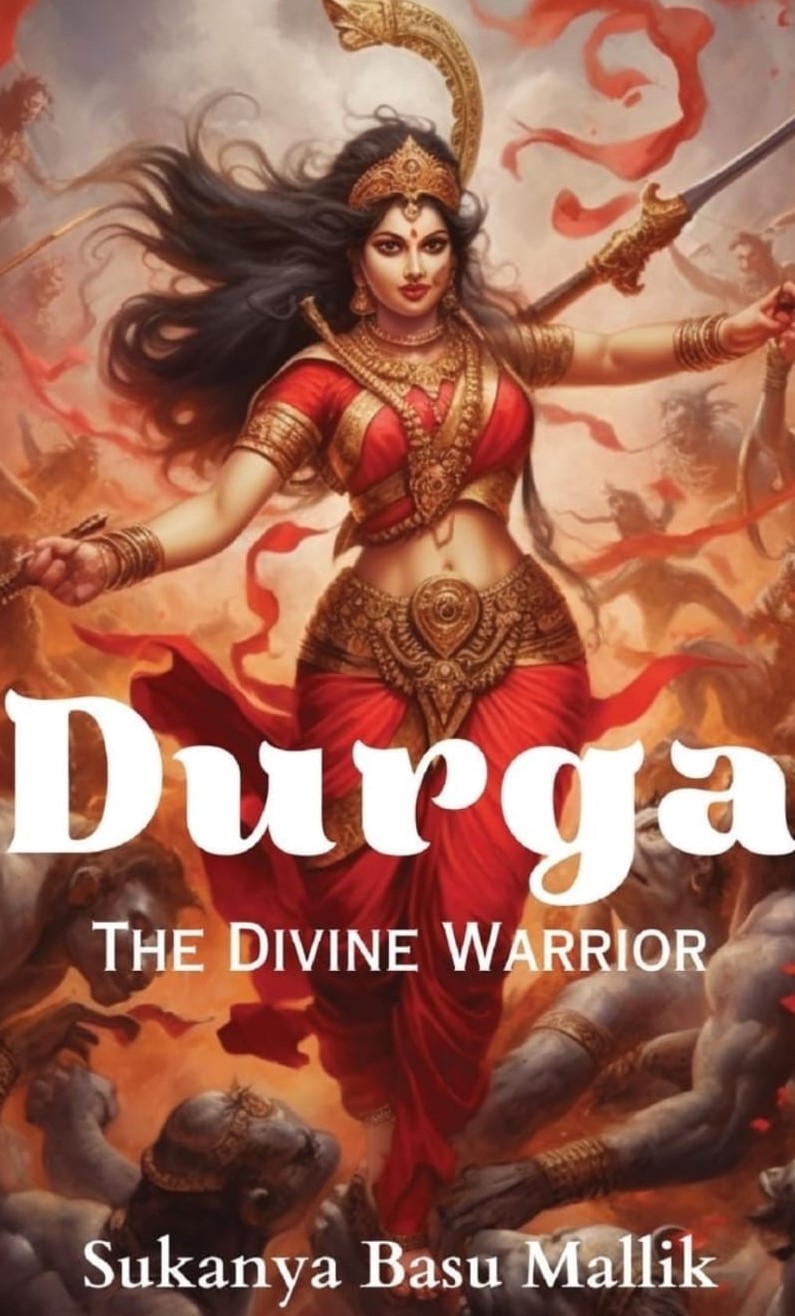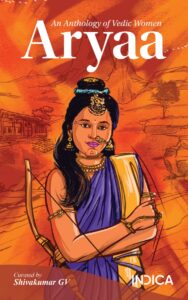Aryaa is a collection of ten stories from Vedic and post-Vedic literature that brings to life the stories of ten women, each unique, each strong, each of whose story is an adventure in itself, and who shaped in small, and big, ways ancient India.
Eight of the women featured figure in the Mahabharata, while two are from the Upanishads. There is Shakuntala, born to an apsara and a sage, and who became the progenitor of the race of the Bharatas. Chitrangada, the warrior princess who married the Pandava Arjuna and whose son Babruvahana, would meet his father in battlefield. One cannot talk about Chitraganda without also writing about Ulupi, the Naga princess who basically kidnapped Arjuna to have as her husband. From that union was born Iravan. The tale of Damayanti is perhaps the most romantic tale ever pennedand whose account was narrated to Yudhishthira as a reminder that what was the present had repeated in the past; such was the way of itihasa—history. Subhadra, whose posthumous son was carried on the lineage of the Pandavas. Or Madhavi, who raises her father, Yayati, back to heaven after his fall on the strength of her merits. Then there is Satyavati, the fisherwoman who ensured her lineage survived in the face of the vicissitudes of fate and the dictates of karma.
That leaves two women—Gargi and Maitreyi. Their accounts figure prominently in the Brihadaranyaka Upanishad. Whereas Ved Vyasa is considered the composer of the Mahabharata, he is called the collector, organizer, of the Vedas. In that sense, even these two accounts are of women Vyasa wrote about. These two women are not only unique individuals in their own right, but also one of the most learned sages mentioned in the Vedas.
In a retelling, there is some amount, or a fair bit, of artistic license at work. Else the story would not differ from the original account. Do it too little and the effect is not unlike watered tea; do it too much and the effect can be off-putting. In this anthology the writers walk, successfully, the fine line between prosaic retelling and fantastical re-imagination. Dialog adds to the vividness of some scenes, like this one—“He knows it is too beautiful a day to die.”—from the first story, Chitrangada.
Nine of the stories are retold in prose, one in verse. That is an experiment that can go either way. But the story of Shandilyaduhita, the last one, is written in 4 and 8-line quartets. The story is taken from the Mahabharata and is an upakhyana in its own right. One of the shortest such upakhyanas, the Mahabharata does not tell us the female ascetic’s name. She is only referred to as Vriddhkanya (old girl). This novel retelling is a standout story in the anthology. The lines, quartets, octets keep you reading, following the path of the young saadhvi’s progression from girl to aged ascetic and back to youthful beauty.
Aryaa is a fine effort by a talented group of ten authors, each of whom brings their own imagination, understanding, and artistic talents to the accounts of ten women from ancient India. Curated by Shivakumar G.V, this is an admirable anthology that will appeal to young and adult readers alike.














